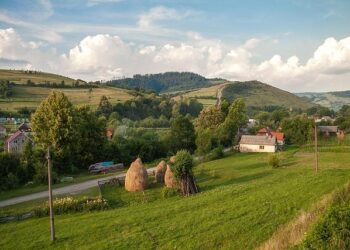The War Room newsletter recently highlighted a growing debate within U.S. policy circles regarding America’s hesitancy to supply certain advanced weapons to Ukraine. As the conflict in Ukraine intensifies, strategic considerations and geopolitical calculations are shaping Washington’s cautious approach. This article explores the factors behind the U.S. decision to limit arms transfers, examining the intricate balance between supporting Ukraine’s defense needs and managing broader international stability, as detailed in The Economist’s insightful analysis.
The Strategic Calculations Behind America’s Hesitation to Supply Ukraine
Despite widespread calls to bolster Ukraine’s defenses, the U.S. government’s reluctance to flood the region with advanced weaponry stems from a calculated assessment of broader geopolitical risks. Washington remains cautious not to escalate the conflict into a direct confrontation with Russia, mindful of the unpredictable consequences that could spiral beyond Ukraine’s borders. Additionally, concerns persist over the potential for sophisticated arms to fall into unintended hands, destabilizing the delicate power balance in Eastern Europe.
Key factors influencing this restraint include:
- Risk of escalation: Supplying cutting-edge weapons might provoke a more aggressive Russian military response or invite intervention from other global powers.
- Long-term strategic interests: The U.S. seeks to maintain influence in the region without committing to a direct military role that could entangle it indefinitely.
- Alliance dynamics: Navigating the varied priorities of NATO members complicates a unified, robust arms-support strategy.
- Logistical complexities: Ensuring secure delivery and usage of high-tech equipment demands time and strict oversight.
| Concern | Impact | U.S. Response |
|---|---|---|
| Escalation | Higher risk of Russia widening conflict | Limited advanced weapons supply |
| Arms Security | Weapons diversion to non-state actors | Enhanced vetting and monitoring |
| Alliance Cohesion | Divergent NATO support levels | Diplomatic coordination efforts |
Assessing the Impact of Weapon Denial on the Conflict Dynamics
Weapon denial, as a strategic choice, has introduced complex layers to the conflict’s evolution. By restricting advanced arms to Ukraine, the U.S. aims not only to curb escalation but also to influence Kyiv’s operational tempo and diplomatic posture. This calculated restraint shifts the balance, compelling Ukrainian forces to rely on existing arsenals, which can limit rapid advances but may also encourage innovative defensive tactics. Furthermore, it impacts the morale and strategic calculus on both sides, fostering a prolonged stalemate rather than a swift resolution.
Consequences of Weapon Denial:
- Slowed offensive capabilities for Ukrainian troops, potentially reducing territorial gains
- Pressure on alternative supply lines and local arms production to meet battlefield demands
- Increased diplomatic leverage for the U.S. in shaping conflict outcomes
- Heightened risk of prolonged attritional warfare with greater civilian impact
| Factor | Effect | Implication | ||||||||||||
|---|---|---|---|---|---|---|---|---|---|---|---|---|---|---|
| Delayed Arms Delivery | Reduced combat readiness | Prolonged frontline engagement | ||||||||||||
| Restricted High-Tech Weapons | Limited offensive breakthroughs | Negotiation leverage reinforced | ||||||||||||
| Focus on Defensive Systems | Improved survivability | Completed Table Row: | Factor | Effect | Implication | Summary of Weapon Denial Impacts:
The U.S. weapon denial strategy works to contain escalation while maintaining influence over Ukraine’s operational decisions. By limiting advanced arms, Kyiv is nudged towards defensive posturing rather than rapid offensive action.
Ukrainian forces experience slower offensive momentum, relying on current (possibly aging or less effective) arsenals. This slows territorial advances but may increase reliance on creativity in defense and logistics adaptations.
Weapon denial enhances U.S. diplomatic leverage by tying military support to political outcomes, encouraging negotiations over outright military victory.
The restriction contributes to extended engagements, raising the risk of attritional warfare, potentially increasing civilian casualties and infrastructure damage as the conflict drags on. If you want, I can help create a more detailed analysis or provide suggestions on strategic alternatives regarding weapon denial. Policy Recommendations for Balancing Support and Security ConcernsTo effectively navigate the complex terrain of military aid to Ukraine while maintaining national security interests, policymakers must embrace a dual-pronged strategy. First, the United States should enhance transparency and communication channels with allied nations to ensure a unified approach against potential escalation risks. Encouraging collaborative defense initiatives can distribute the responsibility for support, thereby reducing the pressure on America to shoulder the burden alone. Targeted assistance, focused on non-lethal aid and intelligence sharing, can maintain operational momentum on the ground without crossing red lines that provoke direct confrontation with Russia. Second, it is imperative to establish a dynamic assessment framework that regularly evaluates the security implications of weapons transfers. This framework should integrate:
Such mechanisms will not only safeguard against unintended consequences but also empower policymakers to fine-tune support based on evolving conditions. The following table summarizes key policy tools currently under consideration:
Key TakeawaysAs the debate over U.S. military support for Ukraine continues to unfold, The Economist’s War Room newsletter provides a critical lens on the strategic calculations shaping American policy. Understanding the reasons behind Washington’s hesitance to supply certain weapons sheds light not only on the complexities of international diplomacy but also on the broader implications for the conflict’s trajectory. As global tensions persist, keeping a close eye on these developments remains essential for comprehending the evolving landscape of support and resistance in the Ukraine war. ADVERTISEMENT |
















